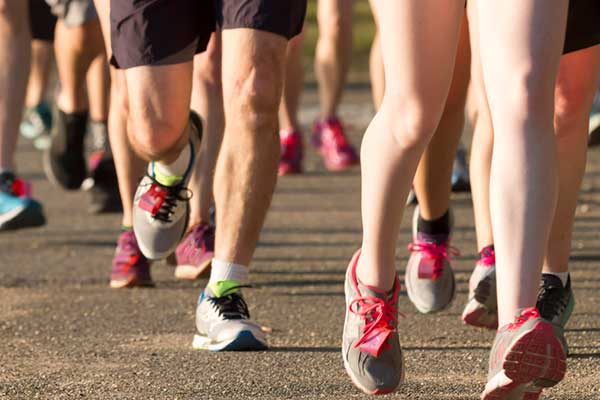Running may be the perfect sport for the pandemic.
You don’t have to go to the gym. You don’t need any expensive equipment. And it doesn’t require any special skill.
Most importantly, it’s easy to social distance.
So it’s no surprise that running is booming during the COVID crisis.i
The running app Runkeeper reports a 252% increase in customers. And not only are there more runners during the pandemic, but runners are running more often. They go jogging about 62% more often now than they did before COVID hit.ii
When it comes to shoes, all runners face a decision… Is it best to buy a well-padded shoe or one that is light? Which kind is more comfortable and more likely to prevent injuries?
It seems like the answer would be obvious…
A heavily cushioned shoe should minimize the impact of each stride, leading to fewer injuries.
Scientists at the University of Oregon put this theory to the test in the first real-life trial of its kind.iii
They gathered 15 runners for their study. First they had the subjects run 5,000 meters, or about three miles, on a treadmill wearing a light shoe.iv
After a seven-day rest period, they had the participants repeat the treadmill run with a heavily cushioned shoe.
During each test, the researchers measured the force placed on the runners’ shoes and legs as their feet struck the treadmill surface.
The Best Running Shoe to Reduce Injuries
The researchers found something unexpected. The runners experienced greater impact and stress on their feet and legs while wearing the heavily cushioned shoe compared to the lighter one.
More impact is directly linked to more running injuries such as plantar fasciitis and bone stress fractures, the researchers said.
Dr. Christine Pollard is an associate professor of kinesiology at the University of Oregon. She is one of the study authors. “We were surprised by these results,” she said. “We thought we would see the opposite.”
Dr. Pollard thinks that the increased cushioning “caused the runners to rely more on the shoe than on their own internal structures” to blunt the impact of their strides.
She said the subjects reported they could feel the extra cushioning in the heavier shoe while running. This led them to relax their stride, which increased the impact of their feet hitting the treadmill.
The study was published in the Orthopaedic Journal of Sports Medicine.
Dr. Pollard did a follow-up study in which she gave subjects six weeks to get used to running shoes with more padding. But it didn’t make any difference. The results were the same.
More padding meant greater impact…and more potential for injury.v vi
Sidestep Injury…While Saving Money on Shoes
The most expensive running shoes tend to be those that have the most cushion. They are often advertised as “maximal” shoes.
But if you want to avoid injuries–or if you have joint problems–these studies show you’re better off with lighter models.
You might save a few dollars, too.
Get the Latest Breaking News About Coronavirus Here
- Many Seniors Take Drugs That Could Reduce COVID Vaccine Response. Are you one of them? Click HERE to find out.
- The Alarming COVID Vaccine Side Effect Every Woman Should Know About. It’s sending some women running to their doctors into a panic. Click HERE to read more.
- Omega-3s Cut COVID Death Risk, Study Finds. Most people take fish oil for heart health. But new research shows it could offer an important added benefit during the pandemic. Click HERE to read more.

